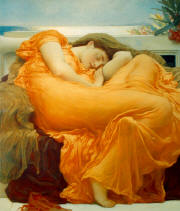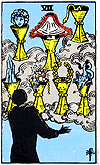A Pterry Rave (For Author Terry Pratchett)

[photo to the left, courtesy of WebShots.com]
Do you want to have a great time and not have to leave your brains or humanity behind? I’ve got an idea for you: read anything by Terry Pratchett, the author of fantasy books about that flat world, balanced on the backs of four elephants, who stand on the shell of the great turtle Atuin, called Discworld.
This man who wrote “Geography is just physics slowed down, with a few trees stuck on,” whose characters are patch works of flaws, endlessly funny, and at least as human as we round-earthers.
This writer whose puns, and political and literary allusions (when I catch them, I’m sure I miss many) make me sputter with delight.
This fair-minded, riotously ridiculous, seemingly unendingly creative author who fills his books with peoples of all kinds: witches, wizards, gnomes, trolls, zombies, vampires, werewolves, elves, golems, fairies, druids and sorcerers, to mention a few, in interlocking and hilarious but somehow working societies.
Everything and everyone in human history, from ancient to modern, is up for roasting in these books – but without even a whiff of condescension or meanness coming from the author’s direction. Nothing is sacred, and that just means everything is.
Pterry, as he’s known in his online fan-clubs, is British. He’s so popular in the U.K. that at one time it was rumored 1% of all books sold there were authored by him. Pterry’s books are readily available here in the States, so let’s show the U.K. we also know a great author when we read one.
Below are a few of the sites with Pterry information:
Terry Pratchett Books Book site, with reviews, comments by Pterry, and more.
The L-Space Web Biography, Books & Writings, Art & Graphics, FAQs; Fan Activity; and more.
Fantastic Fiction His books, releases, covers, descriptions and availability.
Fan listing List of fan groups.
Discworld Monthly Free monthly online newsletter.
Annotated Pratchett File All those allusions I’m sure I don’t get. :D)
That’s more than enough for a start, and there are many more sites out there.
Following is a list of some of my own favorite Discworld books, but any of the Discworld series is fabulous:
WYRD SISTERS (three of the funniest, most magical witches ever)
WITCHES ABROAD (more of the above witches)
MOVING PICTURES (send-up of the movie industry)
GUARDS! GUARDS! (the most motley and wonderful Nightwatch ever)
MORT; SOUL MAN; REAPER MAN (three books about Death, the most amazing and profound characterization ever)
GOING POSTAL (if I had to pick a favorite or not be allowed to ever read another Pterry book, this would be it; amazing)
THE WEE FREE MEN (for children, but definitely not childish, and very enjoyable for this over-grown child)
I warn you, his books are addictive!
‘til next time, keep dreaming,
Roswila
[aka: Patricia Kelly]
* * * *If you wish to copy or use any of my writing or poems, please email me for permission (under “View my complete profile”)
NEW POST(S): A Daily Dream Haiku; Dream-Based Haiku; The Demise of Pegasus Dreaming; Using The Tarot With Dreams.
FUTURE POST(S):Using Your Dreams to Create Poetry & Stories (4 fun exercises); On Getting Old* * * *




